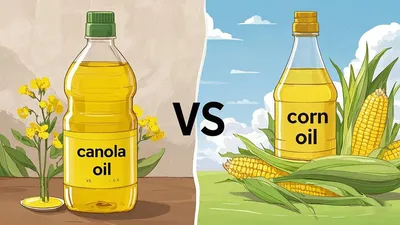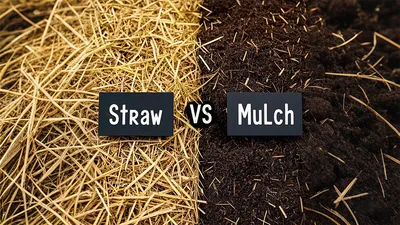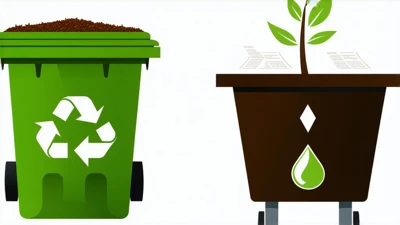
Comparison Table
| Comparison Factor | Composting | Landfill Disposal | Notes |
|---|---|---|---|
| Greenhouse Gas Emissions | Lower (primarily CO₂) | Higher (methane, a potent GHG) | According to EU data, composting eliminates methane emissions. Methane is 25 times more potent than CO₂. |
| Methane Production | Negligible | Significant (50-70% of landfill gas is methane) | Landfills are responsible for the third-highest methane emissions in the USA, per the EPA's 2022 report. |
| Soil Health Improvement | Enriches soil with nutrients | No benefit | Compost boosts soil organic matter, which enhances fertility and helps retain water (FAO, 2021). |
| Waste Volume Reduction | 60-70% volume reduction | Minimal (waste compacts over time) | Composting minimizes landfill requirements while extending their overall lifespan. |
| Decomposition Time | Weeks to months | Decades | Quick stabilization of organic waste reduces long-term environmental hazards. |
| Energy Consumption | Low (aerobic process) | High (collection, transportation, methane capture systems) | According to the UK Waste & Resources Action Programme, composting takes 30% less energy than managing landfills. |
| Water Pollution Risk | Low (if managed properly) | High (leachate contamination) | Compost binds pollutants effectively. However, landfills demand costly leachate management. |
| Nutrient Recovery | High (nitrogen, phosphorus, potassium) | Negligible | Using compost instead of synthetic fertilizers helps to minimize agricultural runoff (UNEP, 2020). |
| Biogas Production | None | Yes (if methane captured) | Methane is captured in only 50% of USA landfills, as per EPA data. |
| Land Use Efficiency | Reusable land (e.g., farms) | Permanent land consumption | Smaller composting plants can be built close to farmland without conflicts. |
| Economic Cost per Ton | $30–$50 | $50–$100 | In the long term, composting is 40% cheaper. This is because landfill fees are avoided, says the World Bank (2021). |
| Job Creation | 3x more jobs per ton | Low | Composting generates green jobs in collection, processing, and sales (ILO, 2022). |
| Pathogen Reduction | Effective via heat | Potential persistence | Anaerobic conditions in landfills do not kill pathogens. Thermophilic composting, on the other hand, is highly effective. |
| Air Quality Impact | Low (dust control needed) | High (volatile organic compounds, H₂S) | The California Air Resources Board states that hazardous air pollutants from landfills are 17 times greater. |
| Odor Management | Controlled via aeration | Frequent complaints | The smell from composting is short-lived and can be handled with good practices. |
| Vector Attraction (e.g., pests) | Low (covered piles) | High (open landfill cells) | Composting facilities rely on biofilters for pest control. In contrast, landfills do not employ this method. |
| Carbon Sequestration | Stores carbon in soil | Releases carbon | Using compost will not sequester carbon. 5–1.In 2019, the IPCC stated that there were no CO2 emissions per acre. |
| Contamination Risk | Moderate (plastics, metals) | High (toxic leachate) | Source separation is essential for minimizing contaminants during composting. |
| Scalability | Adaptable to communities | Large-scale only | Decentralized composting fits both urban and rural requirements, cutting down on transportation expenses. |
| Long-Term Sustainability | Circular economy model | Linear waste model | Responsible consumption is a key aspect of UN SDG 12. Composting promotes this idea. |
| Biodiversity Impact | Positive (soil microbes) | Negative (habitat disruption) | The use of compost promotes a wider range of microbes. These microbes play a key role in maintaining ecosystem health. |
| Waste Diversion Rate | 30–50% of municipal waste | 10–15% (with recycling) | Composting plays a role in managing the largest waste stream, which consists of organics (Eurostat, 2020). |
| Material Recovery | 100% organic reuse | 0% (unless mined) | Ecosystems benefit when compost is chosen over peat extraction. |
| Lifecycle Analysis | Net-positive environmental impact | Net-negative | In LCA studies, composting is more efficient in terms of resource use. |
| Climate Resilience | Improves soil drought resistance | Exacerbates climate impacts | According to a 2021 USDA study, compost raises soil water retention levels by 20%. |
| Public Health Benefits | Reduces toxic exposure | Risk of respiratory illnesses | Composting removes asthma triggers linked to landfills, according to the WHO (2019). |
| Policy Incentives | Tax credits, grants | Regulatory penalties | The EU Landfill Directive emphasizes composting over disposal. |
| Community Engagement | High (education programs) | Low | When people compost, they foster environmental stewardship. |
| Technological Requirements | Low to moderate | High (liners, gas systems) | Composting involves methods that are simple and can be modified. These methods are highly appropriate for low-income regions. |
| Maintenance Costs | Lower long-term | Higher (monitoring, aftercare) | Post-closure maintenance for landfills lasts over 30 years and costs millions annually. |
Composting reduces waste. Does it also help the environment more than landfills?
A major waste management challenge confronts us globally. Immediate action is essential. Currently, over 2 billion tons of municipal solid waste is disposed of every year. The amount is likely to rise to 3 billion tons. By 2050, there will be 4 billion tons of organic waste. It is urgent to find sustainable disposal methods.
Though landfill usage remains prevalent in waste management, composting is increasingly viewed as an effective and sustainable practice. This essay explores the claim that composting is more sustainable than landfill waste management. Environmental, economic, social, and policy angles are analyzed. Evidence comes from case studies and personal experiences.
II. Environmental Impact
A. Greenhouse Gas Emissions
The third-largest human-caused source of methane in the U.S. is landfills, making up 15% of emissions. Methane is 28 to 36 times more potent than CO₂ over a 100-year period. It forms when organic waste decomposes without oxygen. Through composting, aerobic decomposition occurs. As a result, there is only a tiny amount of methane released.
The EPA reported in 2021 that there is no reduction in emissions from composting one ton of food waste. Landfilling would have produced 71 metric tons of CO₂ equivalent.
B. The health of the soil and its biodiversity
Compost adds nutrients to the soil, enhances water retention, and helps reduce erosion. According to a UC Berkeley study, soils treated with compost can store 12% more carbon than soils left untreated. When waste decomposes in landfills, it produces harmful leachate. This leachate often contaminates groundwater and damages surrounding ecosystems.
C. Circular Economy Strategies for Improved Resource Utilization
In line with circular economy concepts, composting transforms waste materials into useful resources. In San Francisco, composting reduces landfill use by 80%, while producing high-quality soil that helps local vineyards and urban farms thrive. Landfills operate on a linear 'take-make-dispose' model, unlike the closed-loop system.
III. Economic Considerations
A. Cost-Benefit Analysis
For landfill tipping fees, the average charge in the U.S. is $55 per ton. The filling of sites leads to rising costs. Investing in composting facilities can be costly initially, but it pays off with long-term savings. As per a 2020 Waste Management study, composting food waste costs $30–$60 per ton. Including environmental externalities, landfill disposal costs $70–$100 per ton.
B. Supporting Job Growth and Economic Progress
When we compare composting and landfilling, composting provides 2–4 times more jobs per ton. Recology in San Francisco has a workforce of over 1,000 individuals. They are engaged in green jobs related to collection, processing, and soil distribution. Thousands of informal waste pickers in Kerala are earning their livelihoods through local composting efforts.
IV. Dimensions of Society and Culture
A. Educating the Public and Driving Behavioral Transformation
While composting provides significant benefits, many people hesitate to adopt it because they misunderstand it. A 2022 Pew Research survey found that 60% of Americans think composting takes too much time. Seattle's 'Food Too Good to Waste' campaign has raised participation rates by 30% with the help of workshops and free bins.
B. Community-Led Initiatives
Composting is gaining recognition for its social impact, thanks to grassroots work. In Nairobi, Kenya, the Mukuru Recycling Initiative empowers slum residents to manage organic waste through composting. The effort lessens landfill use while supporting school funding. Activities like these lead to stronger environmental awareness. They also foster teamwork among people.
V. Policy and Governance
A. Regulatory Frameworks
Effective policies play a key role. The EU Landfill Directive pushes member states to decrease landfill waste to 10% by 2035 and supports composting as an alternative. In the U.S., a landfill ban on food waste in Vermont has led to a significant rise in composting, with rates hitting 62%.
B. International Comparisons
Sweden uses an integrated approach to waste management. Forty-nine percent of household waste is composted, and fifty percent is incinerated for energy recovery. Critics say incineration results in CO₂ emissions. As a result, composting is regarded as a superior method for organic material disposal.
VI. Case Studies
A. San Francisco, USA
San Francisco implemented a policy in 2009. The policy says that all residents and businesses need to separate organics. The city has achieved an impressive feat by keeping 80% of its waste out of landfills while creating 15,000 tons of compost per year. Yearly emissions are now down by 370,000 metric tons of CO2 because of this program, a reduction comparable to removing 80,000 cars from circulation.
B. Sweden prefers waste-to-energy solutions. Composting is still an important method
Sweden generates energy by burning 50% of its waste. However, composting organic materials is seen as more important. There was a dramatic rise in the national composting rate, going from 10% in 2000 to 49% in 2020. This was primarily due to tax reductions for compostable packaging and city-led collection efforts.
C. Kerala, India
Kerala's "Haritha Keralam" mission promotes decentralized composting. More than 3 million households have started using backyard compost pits, and this has helped divert 70% of organic waste from landfills. The state has seen a 20% reduction in groundwater nitrate levels, which is linked to decreased leachate contamination.
VII. Personal Reflection
I compost at home. It enriches my garden soil and reduces my household waste by 40%. Yet, challenges persist. My urban area lacks curbside organic waste collection. I need to haul compost to a specific location. This creates an obstacle for numerous individuals. Without systemic support, ensuring the accessibility of composting will remain a challenge.
Composting is a greener alternative to dumping waste in landfills. It helps reduce carbon footprints, improves soil health, supports sustainable economies, and empowers individuals within communities. To ensure success, three factors are crucial: rigorous policies, meaningful public engagement, and sufficient funding for infrastructure. Non-recyclable waste may still require landfills. Prioritizing the composting of organic waste is crucial for advancing sustainability. A guide for change has been proven to exist through the case studies. All that is required now is our joint effort to carry it out.
















